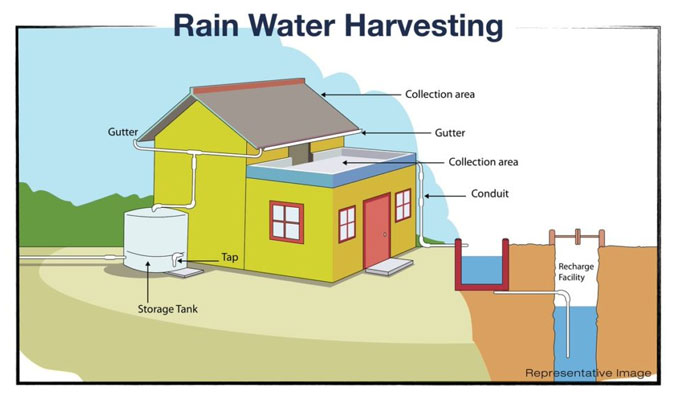
Rainwater Harvesting - How is it Done
The climate change has started long ago and it is hurting everybody. Some areas on earth will be drowning in excess water, but some other will be dry as bone. This effect is already being seen in many hot or dry regions of the world. We can get some protection from this effect, by collecting some of water that just falls off the sky and flows off to the sea. This technology is called rainwater harvesting.
The phrase Rainwater Harvesting is an umbrella term for any technology that lets you gather the water from rain, dew or fog, which, without the technology, would have been completely wasted. It involves collecting the water from a roof or similar surface, and directing it to a sort of reserve, like a tank or an aquifer.
The water collected via this system can be then used for all kinds of non-consumption tasks, like, using it for livestock, watering or irrigating your plants, cleaning, or recharging your groundwater level. The last is, arguably, the most important in these days. With a little treatment, you can also dink it or cook with it.
Advantages of rainwater Harvesting:
Independent water supply: Where clean water is costly or hard to find, rainwater harvesting becomes a mandatory system for getting clean water on your own. Even where clean water is readily available on supply, supplementing that with your own rainwater harvesting system will cut down a lot on your water usage.
Drought Supplementary: Drought is a horrible situation when there is no rain and every molecule of water is precious. You can collect dew or fog or water vapor using special water condensation techniques to stay alive.
Refilling groundwater: Most urban areas nowadays rely on directly pumping up water from underground and using it. This is lowering the ground water level fast and soon the pumps will run dry. To prevent this, you can capture the rain and direct it underground, instead it letting it flow away. This is very useful for those who use their own wells; they know how water levels drop inch-by-inch every summer.
Rainwater Harvesting System:
A typical rainwater harvesting system is all about capturing atmospheric water off a surface and redirecting it to some sort of a reservoir. The components of a standard rainwater harvesting setup are as follows:
1. Catchment Area: This is the part where the atmospheric water touches your system first, and is collected here. This is generally a wide flat surface, like roofs, terraces, even a lawn.
2. Coarse Mesh: This is the separator between the water collection area and the pipes. It?s a grille that only allows water to get in the pipes and not debris.
3. Gutters or Channels: These are the open collection ducts that run along the edges of the catchment area, generally in the lower side since the water would flow that way. They can be a half-circle or square in cross-section. When built above ground, like on the edges of a roofing, they have to be supported well so that the weight of the water doesn?t destroy them. To be frank, in thunderstorms with heavy rainfall that force can be brutal, so brace them wisely.
4. Conduits or Pipes: These are simply the water transport lines from the gutter ends to the usage or storage system. As long as they can handle the most expected capacity, you don?t need to spend much on them ? light PVC pipes will do.
5. First Flush: The very beginning of the rain is often quite polluted with natural acids and dirt from the catchment, so you don?t want that to enter your clean rainwater harvesting system. The first flush works as a device to catch the first few liters of rain and redirect it to somewhere outside the system. You may just let it run off to the drain, or transport it to irrigation. However, in drought-like situation where every bit of water is precious, you need to install a bypass to this component so that the system collects all the water no matter how polluted ? and then invest in better filters.
6. Filtration Units: This is one of the very important part of the rainwater harvesting system if you want to get clean water from the sky. This component consists of multiple filters that clean out the sediment and chemical stuff in the rainwater. Generally, a charcoal filter and a sand filter are used in tandem. They should be cleaned and changed regularly.
7. Storage Facilities: Any water storage tanks, factory-made or constructed on-site, can be used for rainwater harvesting. Make sure the size fits your expected needs. It?s a good idea to construct the storage underground to keep the water cool and prevent drying through leaks. Regular cleaning and sanitizing are well-advised for these tanks.
8. Recharge Structure: When you need the water to refill your groundwater source (like a standard well, borewell pump, tubewell etc.) you need to build a recharge structure and send the clean water through it to the underground strata. These are generally dugwells, pipes lowered deep into ground etc.
The pipes and well wall should have small openings at some length of the bottom, through which the water can percolate into the ground. You may need to develop the bottom soil of these structures to loosen the soil and make it more accepting to the water. If your groundwater level is not that low, you can just use a deep underground settlement tank with an open bottom.


